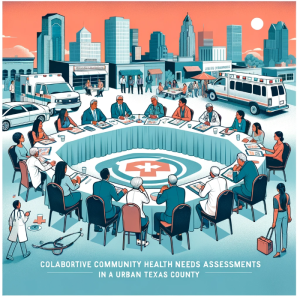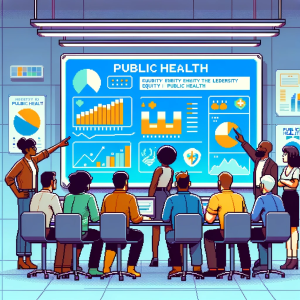
How Health Departments Address Equity
In today’s world, where technology and science are rapidly advancing, it’s disheartening that racial and ethnic disparities in health and healthcare continue to persist in the United States. These disparities are not just numbers on a chart; they represent real people who face preventable differences in the burden of disease, access to care, and overall health outcomes. Addressing these disparities is crucial, and a new study sheds light on how public health agencies can play a pivotal role in this effort.
Understanding Health Disparities
Health disparities refer to the preventable differences in health outcomes experienced by socially disadvantaged populations. These disparities can result from a variety of factors, including socioeconomic status, education, neighborhood and physical environment, employment, and social support networks, as well as access to healthcare. Racial and ethnic minorities often face these challenges more acutely, leading to poorer health outcomes compared to their white counterparts.
The Study: A Comprehensive Review
A recent scoping review explored the effectiveness of health equity interventions performed in collaboration with public health agencies in the United States. The review, covering studies published between 2017 and 2023, aimed to identify the key components of successful interventions and highlight areas needing further research.
Key Findings
The review categorized the interventions into five main areas:
- Access to Care: Efforts to increase access to healthcare services for minority populations. This included mobile clinics, community health workers, and home-based interventions.
- Health Behavior: Programs aimed at changing health behaviors through education and community outreach.
- Infectious Disease Testing and Prevention: Strategies to improve testing and prevent the spread of infectious diseases like HIV and COVID-19.
- Cancer Screening: Initiatives to increase cancer screening rates among underserved populations.
- Structural and Policy Changes: Interventions that address broader systemic issues, such as policy changes and health system reforms.
Why This Matters
The findings of this review are significant for several reasons:
- Informed Policy Making: By understanding what works, public health leaders can implement evidence-based interventions that effectively reduce health disparities.
- Resource Allocation: Funding agencies can prioritize areas that have the most impact, ensuring that resources are used efficiently.
- Community Engagement: Successful interventions often involve community members in the planning and implementation process, ensuring that the programs are culturally relevant and more likely to succeed.
Real-World Examples
One standout example from the review involved increasing access to HIV testing in marginalized communities. Mobile clinics and community health workers played a crucial role in reaching people who might not otherwise have access to these services. Another example focused on improving diabetes management through home-based health coaching, demonstrating the importance of personalized care.
Challenges and Gaps
Despite these successes, the review also highlighted several challenges:
- Limited Research: There is a lack of peer-reviewed literature on health equity interventions within public health departments, indicating a need for more comprehensive studies. This is pretty surprising, as it seemed* that health equity has been a primary topic for the last several years (at least since 2015)
- Varied Interventions: The wide range of interventions makes it difficult to standardize and compare outcomes.
- Need for Continued Research: Ongoing research is essential to adapt and refine interventions to ensure they remain effective in diverse communities.
Moving Forward
Addressing health disparities requires a multifaceted approach. Public health agencies must continue to collaborate with community organizations, policymakers, and researchers to develop and implement interventions that are both effective and sustainable.
Why You Should Care
Health disparities affect everyone. When certain groups have poorer health outcomes, it can lead to higher healthcare costs, decreased productivity, and broader social inequalities. By supporting efforts to reduce these disparities, we can create a healthier, more equitable society for all.
Hey, let us know in the comments!
- Have you or someone you know experienced challenges in accessing healthcare due to racial or ethnic disparities? How did it impact your health or well-being?
- What community-based health programs have you seen make a difference in your area? What elements do you think contributed to their success?
You are a Health Innovator – Get Weekly Updates!
Stay at the forefront of public health with “This Week in Public Health.” Each issue updates you on the latest in research, community health, and advocacy. This newsletter is your tool for being an informed and active member of the health community. Subscribe for free and join a group dedicated to making a real difference in public health.
About the Author
Jonathan P. Scaccia, PhD is a clinical-community psychologist with a robust background in public health science and practice. He has led innovative evaluation and research initiatives targeting health equity, vaccine distribution, and organizational readiness. Dr. Scaccia has significantly contributed to major projects, including federal suicide prevention programs and vaccine equity strategies. He has provided expert consultation on public health improvement and evaluation for both national and international NGOs. His work, characterized by a commitment to accessible and impactful public health solutions, has been recognized with awards from the American Evaluation Association and the Society for Implementation Research Collaboration. Dr. Scaccia’s expertise in natural language processing, data analysis, and community-based research makes him a leading voice in advancing public health practices.



